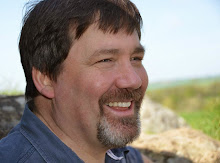In the late second century AD, a charismatic reform movement emerged in the Phrygian region of Asia Minor. Named by its critics after its leading figure, Montanus, the movement was to create controversy throughout the Empire and remains a subject of disagreement among church historians to the present day.
The facts as far as we can deduce them are limited in their scope. Montanus, about whose background we know next to nothing, was a Christian who attempted to reform and purify the churches by preaching a message of moral and spiritual purity, paying particular attention to practical holiness, prayer, fasting, resisting persecution and, more controversially, avoiding remarriage.
Believing that the Holy Spirit was still speaking to the church, the movement acquired a prophetic dimension, with two women, Priscilla and Maximilla, exercising the gift of prophecy along with other un-named individuals. This aspect of the group's life led to its preferred name - the new prophecy.
Tertullian (150 - 225 AD), bishop of Carthage in North Africa, eventually came to believe that the new prophecy represented an authentic spiritual movement and strongly defended it in his later writings. Unfortunately his work in defense of it, De ecstasi, has been lost, though was known and referred to by several ancient writers. Tertullian himself is perhaps better known for his works on the nature of God (he coined the term Trinity) and the person and work of Christ.
Other ancient church leaders were less sympathetic. Jerome wrote a letter at the end of the 4th century refuting the movement and it was declared heretical by the bishop of Rome. Beyond these facts, a number of claims and counter claims have been made about Montanism. Bearing in mind the difficulty in reading church history through the texts of those who opposed the movement, it is hard to know what to make of these competing claims. They include:
- the suggestion that Priscila and Maximilla described themselves as logos and paraclyte
- the description by Montanus of a town on Phrygia as the site of the New Jerusalem
- the claim that the movement were orthodox in their doctrine of the Trinity
- that its leading figures were Sabellians (believers in modalistic monarchianism)
- an expectation on the imminent return of Christ
One view of Montanism is that the personalities whose names survive to this day may indeed have been heretical in some regards but that this controversy masks a deeper movement of spiritual life and renewal that was indeed taking place at this time.
Current archaeological work lead by William Tabbernee at the site of the Montanist New Jerusalem in modern-day Turkey represents an exciting development in our understanding of this early Third Stream Christian movement. [See William TABBERNEE, Portals of the Montanist New Jerusalem: the discovery of Pepouza and Tymion, Journal of Early Christian Studies 11:1 (2003), pp. 87-93. ]



